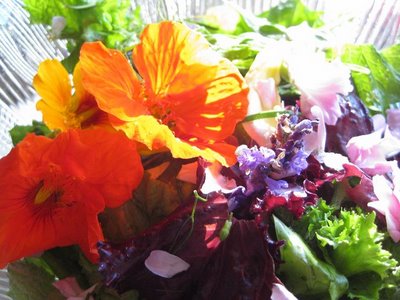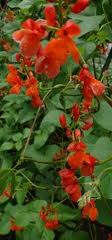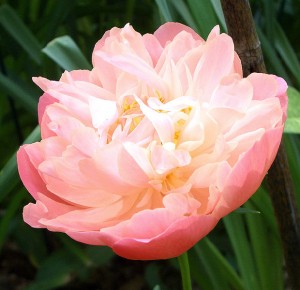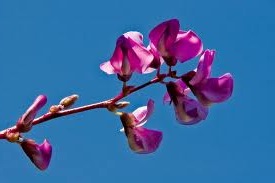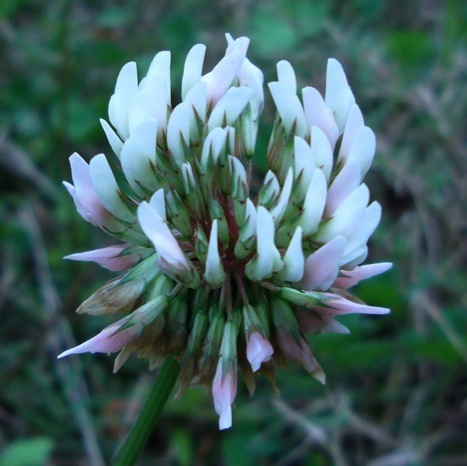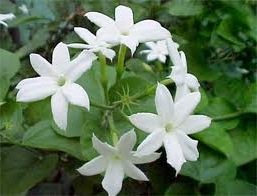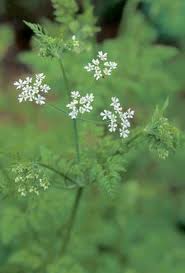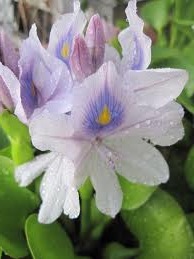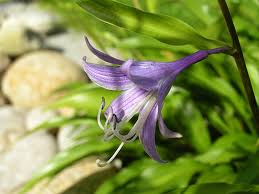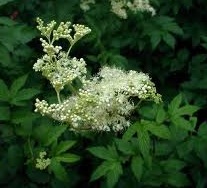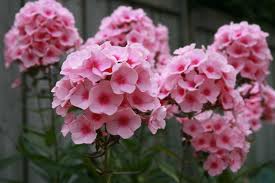Scarlet Runner Bean, Peony, Hyacinth Bean, Clover, Jasmine, Chervil, Water Hyacinth, Plantain Lily, Meadowsweet, Perennial Phlox
Scarlet Runner Bean is not your run-of-the-mill bean. It has bright red flowers, multi-colored seeds and puts on a root to be a perennial though most folks view it as an annual. Depends where you live, I suppose. The root is edible, the young pods are edible before they get fibrous, and the beans in or out of their pods are edible either cooked fresh or after shelling and drying. Read the beans have to be cooked no matter how you prepare them but young pods don’t. The blossoms are under an inch across, grow in clusters, and are available all season. The flavorful flowers are favored by hummingbirds and butterflies and make excellent garnishes for soups and salads. There are at least 18 varieties of the Scarlet Runner Bean. Usually the vine is used to cover fences, guy-wires and trellises. Here’s an article on it.
When my father passed on six years ago he left a small peony garden that still has 18 bloomers, one red and a wide variety of pink shades. They’re quite hardy and don’t like to be moved. Peonies have been been cultivated in home gardens since about the time Columbus sailed the ocean semi-blue. Of course there are no good ones where I live because they like temperate climates and need winter chilling. Originally from China they were and still are used for medicine. Petals can be added to salads or will happily float in drinks. Another option is to parboil them, add a little sugar, and use them as a sweet treat.
I could almost make an identical entry for the Hyacinth Bean from that of the Scarlet Runner Bean because they have so much in common and are so unlike other beans. They’re annuals, ornamentals, have edible roots, leaves, pods, beans and flowers. The difference is the Hyacinth Bean seeds themselves have a different toxin and in a greater amount so they have to cooked far longer. The bean-flavored flowers, however, are edible raw or cooked. To see a separate article on the Hyacinth Bean click here.
My mother told me there wasn’t a time when she couldn’t remember not eating white clover blossoms, Trifolium repens. That’s interesting because raw clover blossoms aren’t the easiest to digest. In fact, the entire clover family is on the cusp of edible not edible. It’s high in protein and the flavor of the blossoms is alright but eating clover leaves is more on the famine food side of life. As for the blossoms, they are usually made into tea which brings a precaution. This is caution usually about sweet clover but should be remembered for all clovers. They should be used totally fresh or totally dried, not wilted and never moldy. In fact, moldy clover is how they discovered the “blood thinner” coumadin, read after it kill a lot of cows. So when you use clover, particularly sweet clover, make sure it is either totally fresh, or totally dried and has no mold. And yes, you can eat red clover blossoms, too. It tastes like hay. To read more about clover click here.
You knew Jasmine was edible. Of course you did. That’s how we get Jasmine-flavored tea. But make sure you are getting the right Jasmine, Jasminum officinale not plants in another genus or family falsely called Jasmine. The real Jasmine has tubular white flowers, waxy, and shiny oval leaves. Jasmine is from Asia but because it has been used for so long no one really knows where it got its cultivated start. There are mentions of it in 9th century texts in China and by the 1700s it had spread so well some folks thought it was native to Switzerland. The famous aroma comes from an oil in the petals and it is those petals you use to flavor your tea. If you live in the Old South do not mistake “Carolina Jasmine” for real Jasmine. It is the offensive and odorous Gelsemium Sempervirens, a significant allergy plant and quite toxic.
One of my favorite dishes uses chervil as a flavoring. In a casserole you put alternating layers of thinly sliced potatoes and sliced onions, a layer of one then a layer of the other. Dab each separate layer with real butter and then a pinch of tarragon and a sprinkling of chervil. Then a bit of salt and pepper on each layer to taste. You fill the casserole that way. On top you spice it up one more time, add more butter, and a sprinkle of paprika. Into the oven it goes around 325º F until tender. It also makes great hash. The chervil is a subtle flavor, and loses much to heat. That is why when you use the flowers for flavoring in a dish or a salad you usually add them last, just enough to heat, in a salad just before serving. Their anise flavor is subtle but the nose knows all.
The most “noxious” weed in the world has edible flowers, and leaves and bottoms. It is also illegal to possess. Follow my motto: “No witnesses, eat the evidence.” I doubt anyone would be prosecuted for eating a weed nearly every regulatory agency wants to get ride of, the Water Hyacinth. Depending upon your perspective it is either a usable biomass that can replace itself in three weeks or its a horrible weed to be done away with. The state of Florida estimates that if it did not spend millions annually and stopped fighting it the aquatic denizen would within three years clog all freshwater bodies and rivers in the state to the point of not usable. Do your civic part by picking the blossoms and cooking them like a vegetable. Their flavor is mild. Note one easy identifying characteristic is that the blossom’s top petal has a yellow spot. To read more click here.
How many Hosta’s there are is a matter of taxonomic debate. Maybe 45. While the flowers of all of them are reported to be edible, according to the Montreal Botanical Garden, at least the young leaves of one, Hosta lancifolia, the Narrow Leaf Plantain Lily, are eaten cooked or preserved in salt. It’s a common home and landscaping plant that can tolerate shade and has naturalized in several states from Massachusetts to all states touching a straight line west to Indiana. I’m sure you have seen its distinctive leaves. It’s a good thing you are interested in the flowers because just about every woodland creature loves to eat the leaves, from deer down to insects. In temperate climes look for blossoms at the end of summer or early fall.
What shall we call it? Meadowsweet or Queen of the Meadow? I grew up calling it Meadowsweet so I’ll stick with that. From the old world it is naturalized in the northeast quadrant of North America, New Jersey north as far as you can go and west to Illinois and then as far north as you can go. And for a botanical hiccup, it is also naturalized in one western state, Colorado. We had multiple horses when I was growing up and subsequently hayed in the summer. I remember many times mowing Meadowsweet and smelling its sweet aroma. Scientifically Filipendula ulmaria, it always grew in the damper areas of the fields. The entire plant is used herbally and in the kitchen to flavor this or that. The blossoms are equally sweet and make a pleasant additions to soups and salads or make a tea, one of the few medicinals teas that’s easy to get down.
There are two Phlox, so to speak. One that gets one to two feet high and shows up seasonally in fields, particularly here in Florida. That’s not the one you want. You want the perennial phlox that grows to three of four feet tall, Phlox paniculata. I’m sure you’ve seen it. Like the Meadowsweet above it is an old world plant found in many home gardens and yards. It has escaped into the wild and can be found in the eastern half of North America plus Oklahoma, Kansas, Nebraska, Utah and Washington state. The slightly spicy blossoms range from red to pink to white. They go well with fruit salads.
See Edible Flowers Part Eight.

